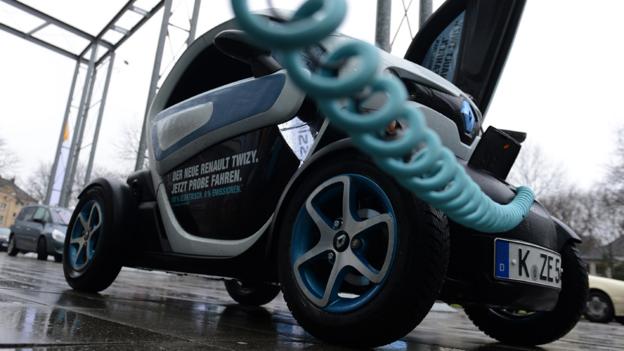


In 2050 cars the cars we drive are likely to run without fossil fuels, and may not even require us to take the As the world’s megacities sprawl and more people in developing countries can afford cars, the number of automobiles on the world’s roads are expected to top three billion. (SPL) Miniature city cars already do without internal combustion engines; but can electric cars become a viable alternative for travel on the highways and byways?
Car companies have recently been telling us what the car of 2020 will be like: autonomous is one word used, electric is another, and it will be connected to the internet too. Sound exciting? It is, but it’s doubtful you’ll find all of this on the forecourt in the next seven years (cars typically get completely redesigned every five to seven years). However, the directions being proposed are a very good starting point to look even further and ask the question: what might the car of 2050 look like?
For a start, will there even be cars in 2050? Will an invention that will be 150 years old by then be replaced by something better? Will environmental concerns kill it? Will people become tired of getting behind the wheel, as recent studies suggest? The answer seems to be “maybe”, but the reality is that the automobile is a very liberating and flexible means of transportation. It fulfills people’s desire to move around freely and independently. And – done right - the automobile can be a sustainable and safe means of transportation.
But we must also acknowledge this form of mobility comes at a premium, as polar ice melts, megacities become suffocated by smog and congestion, resources dwindle, and around 1.2 million people get killed in traffic accidents globally every year. We know why: we want to be mobile, and our mobility has some negative implications.
So what can – actually, must – we do in order to make the automobile of the year 2050 cleaner, safer, leaner and still enjoyable to use? This is a crucial question: mass-motorisation in emerging countries means there will be more than three billion vehicles on the planet in 2050, compared with around one billion today.
Hands-free driving
The automobile in 2050 will be self-driving. Companies are working on concepts allowing cars to cruise along on the highway without driver intervention, many of which are likely to be seen on our roads.
There is the Super Cruise from General Motors, which controls the vehicle on long highway stretches when not much is happening. Then there is the Traffic Jam Assistant from BMW; cars move along in a congested traffic area just like a school of fish. Or there’s Road Train from the European Satre project which includes Volvo, where one vehicle with a professional driver leads a platoon of other vehicles, connected virtually and following like pearls on a string along the highway – turning the commute into possibly more productive time as the drivers can now work or rest. And when the car makes it to its destination, it can park itself in a high-tech parking structure, just as Audi has demonstrated.
Will the driver need to do anything at all? Will there still be a steering wheel? Cars will probably require that drivers monitor what the vehicle does and switch from one mode to another – such as highway driving to city driving. There will probably still be a steering wheel, but some models could have a little joystick that the driver only uses rarely.
Driving is likely to get much safer (human error still accounts for the majority of all accidents) and also much more efficient, as centralised traffic control will lead to a smoother flow and less congestion. But how much of an effect this new technology has will depend on how widely it is rolled out.
The changes might not stop there. We may also have some other kinds of automobiles, which are small, highly efficient mobility pods similar to the GM EN-V concept or autonomous vehicles like the Induct Navia. These will be urban, flexible solutions to move people around.
No comments:
Post a Comment